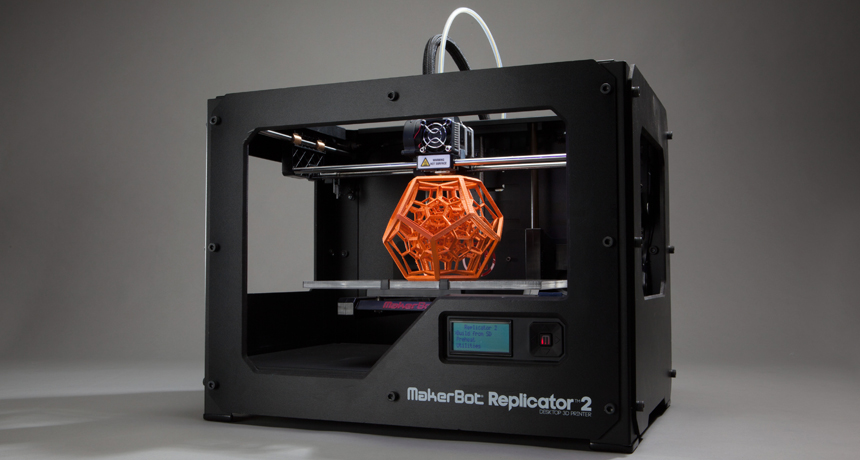A 3-D printer in every classroom
The 3-D printing company MakerBot wants to put its imprint on STEM education

The company that makes the MakerBot Replicator 2, a 3-D printer, hopes to get the printers in thousands of classrooms by the end of this year.
makerbot.com
When you look at a 3-D printer, you get the feeling that the future is here. A printer that could make anything? Who ever thought we would have a machine like that! Now, we have 3-D printers that can fit on your desk. One of these machines is the MakerBot. The MakerBot is a machine that takes patterns from your computer and lays down a series of layers, forming a three-dimensional, or 3-D, object.
People around the world have used the printers to make statues, jewelry, parts, kitchen items and more. Thousands of these objects are on display in the MakerBot Thingiverse. There, other people with MakerBots can find the instructions to build things themselves.
Just imagine if you had a MakerBot in the classroom! Students could design and print models of molecules to help understand their structure and how they work. They could design and print parts for model cars. Printing parts could help students understand the fundamentals of architecture, or even help them add and subtract.
See how the MakerBot 3-D printer works. MakerBot
The MakerBot company wants to make this happen. They want to get a 3-D printer into every classroom. They believe that 3-D printing can be used to help students understand concepts and design things on their own. They are teaming up with Donor’sChoose.org to get MakerBots to teachers. Teachers can request a 3-D printing package and then go to the public to get it funded for their classroom.
Why put a 3-D printer in every classroom? MakerBot took their inspiration from President Barak Obama. In the 2013 State of the Union address, President Obama talked about 3-D printing, saying that 3-D printing will be “the next industrial revolution.”
If you are a teacher who wants a MakerBot in your classroom, you can sign up to campaign for one at Donor’s Choose. Teachers in Brooklyn, the home of MakerBot, will qualify for “Almost Home” assistance. With “Almost Home” grants, MakerBot and its partners will donate most of the funds to get your MakerBot into your classroom. If you get a MakerBot, you also have the opportunity to register for the Thingiverse Design Challenge. The challenge asks users to work with their MakerBot to make 3-D items that can help people learn and understand math. A MakerBot in your classroom could end up helping students all over the country.
MakerBot wants to get thousands of MakerBot packages into K–12 schools by December 31, 2013. If you think your students will benefit from a MakerBot, put together a proposal and join up with Donor’s Choose. You can show your students chemistry, biology, engineering, physics and math with the power of 3-D printing.
Power words
architecture Planning, designing and constructing buildings.
biology The study of living things. The scientists who study them are known as biologists.
chemistry A science that deals with the composition, structure and properties of substances and with the changes that they go through. Chemists use this knowledge to study unfamiliar substances, to reproduce large quantities of useful substances, or to design and create new and useful substances.
engineering The field of research that uses math and science to solve practical problems.
molecule An electrically neutral group of atoms that represents the smallest possible amount of a chemical compound. Molecules can be made of single types of atoms or of different types. For example, the oxygen in the air is made of two oxygen atoms (O2), but water is made of two hydrogen atoms and one oxygen atom (H2O).
physics The scientific study of the nature and properties of matter and energy.